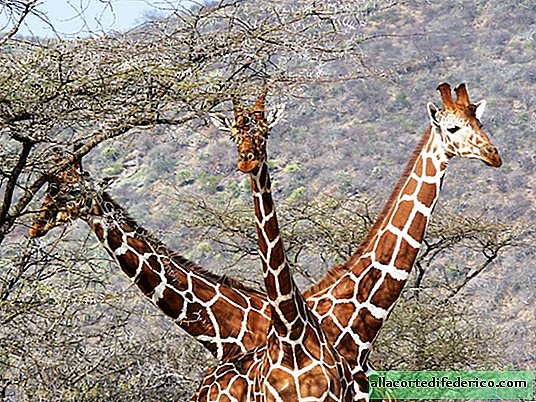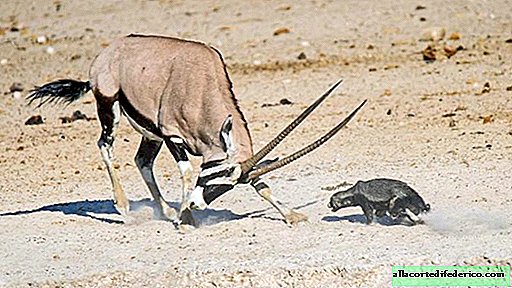Who to be friends against: the ingenious union of ants and trees
Let us travel briefly to Africa and observe the interesting collaboration of ants and trees against the third representative of wildlife. In this case, as a rule, a giraffe acts as a loser. The union of acacias and ants, on the one hand, dictated by the necessity of survival, and on the other, by the conveniences of existence, arouses the interest of scientists from around the world and serves as material for various experiments.
On the expanses of the African savannah is not so easy to find a juicy plant food, especially during a drought. Herbivores survive as they can, and giraffes in this sense are no exception. Numerous species of acacia, adapted to life in a semi-arid climate, are an ideal food for a giraffe.

Reasonable nature rewarded them with a long neck and high legs, which help them reach the very top branches of trees and enjoy fresh leaves. But while the giraffe grew neck, the evolution of trees also did not stand still. Acacias have acquired thorns, spikes and hooks that dig into the skin of animals, and in the leaves of many species there is a high content of tannins - plant poisons that have a sharp taste and make their leaves unattractive. Giraffes responded with thick saliva, a special substance in the liver that helps to reduce the effects of poisons, as well as a surprisingly mobile tongue, which makes it possible to masterfully pluck leaves, avoiding encounters with thorns.
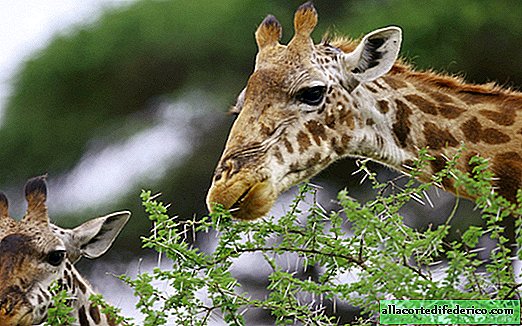
And today we can observe what is called symbiosis in biology - a form of mutually beneficial coexistence of two organisms. To help the acacia came the ants of the species Crematogaster mimosae, which live right in the crown of trees. On acacia trees, in the bases of thorns and branches there are special thickenings in which ants make burrows and passages. Right on the tree, they live, breed and even find food. Especially for their little friends, acacia emit plant nectar at the ends of leaves, which ants eat. And with the encroachment of giraffes, and other herbivores, the ants, as if raised by alarm, begin to violently attack the enemy, forcing him to retreat. Thus, the acacia remains intact, the ants are fed up with their own living space, and you cannot envy only one giraffe in this whole situation. He has to look for other, less savvy plants.
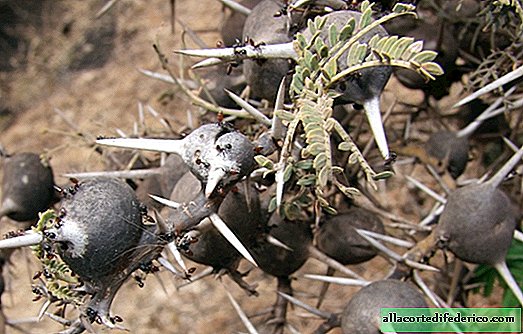
But an interesting picture was observed by scientists in one of Kenya's national parks. Acacia species Acacia drepanolobium cohabit here with the ants protecting them. But in the absence of large herbivores for several years in places where acacias grow, mutually beneficial ties break up. Some acacias were fenced with special nets that did not allow giraffes, elephants and other herbivores to approach them. And this is what scientists managed to find out. Trees that do not suffer from overeating, less often form bloats and thickenings suitable for ants to inhabit, and also secrete not so much delicious nectar, so beloved by insects. Some insects eventually left the trees, and the remaining ones planted aphid colonies for their own food, which negatively affected the growth and development of trees. Eternal, it would seem, friendship came to naught in just 5-10 years of the experiment.
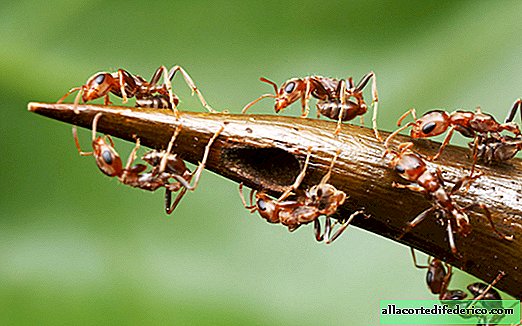
A similar experiment was conducted by scientists in order to determine how the extinction of large herbivores will affect acacia and ants. This process, unfortunately, is becoming disastrous in Africa. Thus, scientists have found that the world around us is much more fragile than we think. Interfering in nature, a person often does not even suspect how subtle connections exist between the inhabitants of the living world of the planet and how easy it is to lead to the destruction of the balance formed over millennia.
